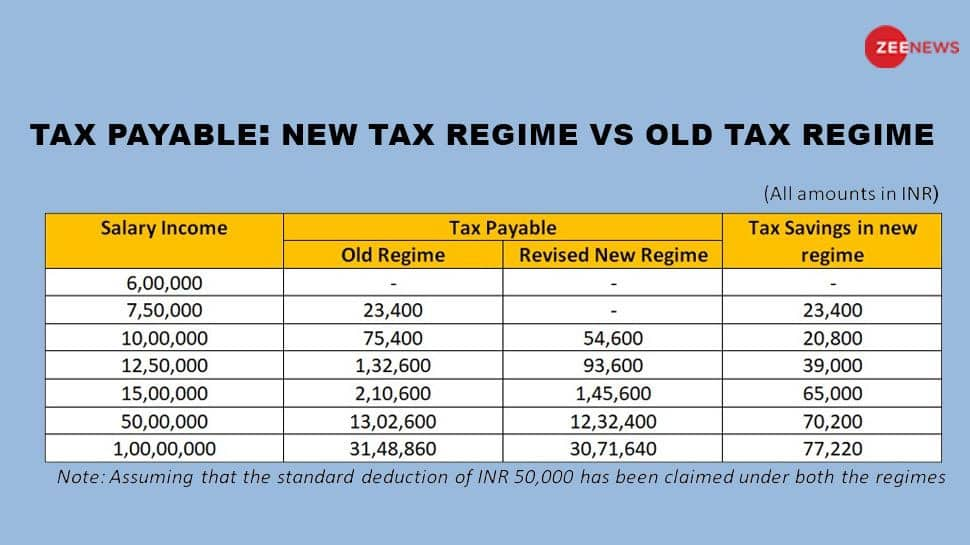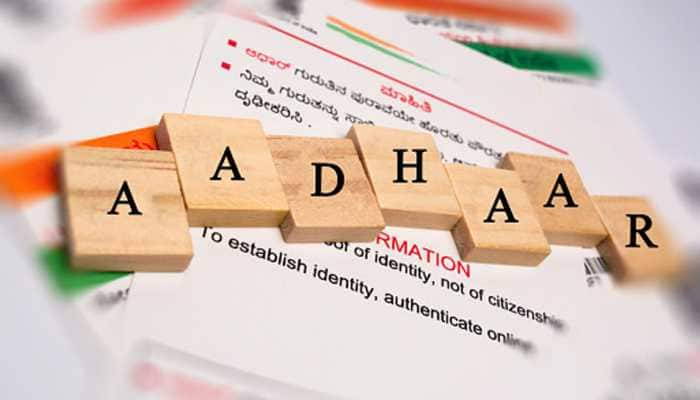Old Tax Regime Vs New Tax Regime: Which is Better For You? Check What Expert Says
Old Tax Regime Vs New Tax Regime: Tax payers are in a dilemma as to which option will be beneficial for them. Read on to find your suitable option.
Trending Photos
)
Finance Minister Nirmala Sitharaman on February 1 presented the Union Budget 2023 announcing various sops for the middle class, salaried and individual tax payers. These Tax proposals announced by FM Sitharaman seek to ensure continuity and stability in taxation, further simplify and rationalise a number of rules to lessen the burden of compliance, encourage the spirit of entrepreneurship, and give citizens tax relief.
Shashanka BR, Partner, EY India told Reema Sharma of Zee Media, “In the 2020 Budget, a new tax regime was introduced for individuals whereby individuals were entitled to a lower rate of tax provided that they did not take the benefit of certain deductions and exemptions. The 2023 Budget has substantially sweetened the new regime – with each tax slab being widened, and the standard deduction of INR 50,000 being made available even for individuals opting for the the new regime. The net result is that many individuals (especially those who are salaried) would see a substantial reduction in their tax burden if they opt for the new regime.”
Individuals who earn up to this amount will not be subject to taxation under the new system, or in other words, they will have to pay "nill" tax, as the FM has increased the rebate maximum in the new tax regime to Rs 7 lakh. The FM also changed the income tax structure under the new personal tax system by reducing the number of tax bands from six to five and raising the tax exemption level from Rs 2.5 lakh to Rs 3 lakh.
Between the Old Tax Regime Vs New Tax Regime, tax payers are now in a dilemma as to which option will be beneficial for them. Shashanka BR has put together an illustration of the tax impact for a salaried person who has made investments that are eligible for Section 80C benefits of Rs 1.5 lakhs under the old regime

Old Tax Regime Vs New Tax Regime: Which Regime to Opt For?
Shashanka says that the Old Tax Regime may continue to be more efficient for individuals who have substantial claims towards House Rental Allowance, housing loan interest etc. Each taxpayer should therefore look at their individual circumstances before taking a decision on which regime to opt for.
Describing the overall Budget 2023-24 appears as ‘balanced and forward looking’ Shashanka added that the FM has focused on inclusive development, infrastructure & investments, green growth, youth power, urban infrastructure, Artificial Intelligence, development of technology and urban infrastructure each of which will have a positive impact.
In the Budget speech, the Finance Ministeralso announced multiple measures for ease of doing business. A one stop solution for identity and address updationwouldbe established via ‘Digilocker’ and Aadhar; PAN would be used as a common business identifier; a system of ‘Unified Filing Process’ will be set-up for obviating the need for separate submission of same information to different government agencies. A simplified risk-based KYC process would also be introduced.
In the Budget speech, the Finance Minister has promised that the Leave Travel Concession benefit for employees would be enhanced from INR 3L to INR 25L. The net result will be a substantial reduction of tax for the salaried aam-aadmi.
The khaas-aadmialso gets some consideration. Recognizing that the peak tax rate of 42.75% that was prevailing was one of the highest in the world, the Budget proposes to slightly reduce the peak tax rate to 39%, which would be applicable to individuals earning more than INR 5cr in a year under the new regime.
Small businesses usually find the “presumptive tax” regime to be attractive, under which they are allowed to pay tax at a flat percentage of their turnover.The ambit of this regime has now been expanded – businesses with a turnover of INR 3cr (vs. INR 2cr earlier) and professionals with gross receipts of up to INR 75L (vs.INR 50L earlier) are now eligible for the concessional regime. To ensure that small businesses receive payments on time from their customers, payments to MSMEs are now allowed as a deduction only on actual payments (subject to conditions).
There has been tightening of some provisions as wellCapital gains tax exemption upon reinvestment of sale proceeds into a residential house has been capped at INR 10cr. The ambit of Tax Deduction at Source on winnings from online gaming has been expanded. There is an increase in the Tax Collected at Source that would apply when individuals make overseas remittances, or purchase of overseas tour packages.
On the corporate side, the changes are relatively smaller, and are principally aimed at plugging loopholes and tax-avoidance.
Stay informed on all the latest news, real-time breaking news updates, and follow all the important headlines in india news and world News on Zee News.
Live Tv







)
)
)
)
)
)
)
)
)
)
